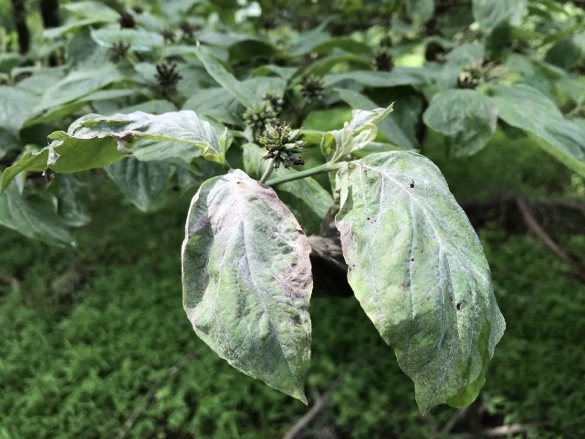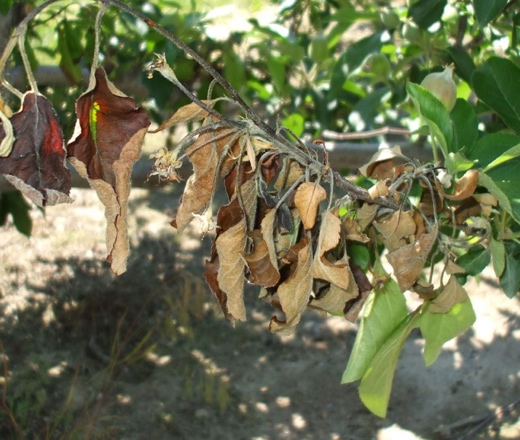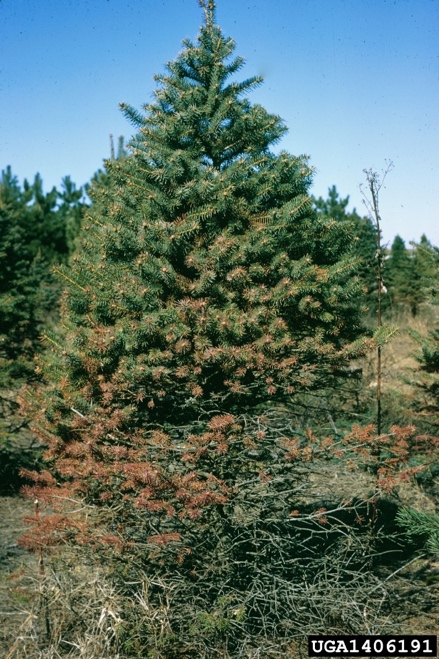7 Steps You Need to Take Now to Prevent Fungal Diseases from Devastating Your Plants and Trees
By: John Campanini, Technical Director, RITree
Fungal diseases pose significant threats to trees (and plants). These diseases can damage trees, ranging from slight blemishes to complete tree death. Woody decay, for example, the most common impact of fungal diseases in trees, weakens tree structure and reduces stability. Fungal diseases also cause cankers, leaf diseases, and root rot in trees and plants. Factors affecting the impact of fungal diseases include tree and plant health, environmental conditions, and type of fungal species.
Fungal diseases contribute greatly to tree mortality in forests and urban landscapes. Hot, humid weather helps generate these diseases. Different fungal species have varying levels of aggressiveness and target specific parts of a tree, so each fungal disease must be treated differently. Pruning infected branches or removing infected leaves can help contain the spread but eliminating these diseases completely is still a challenge.
Fungal Diseases Emerging Locally
A rash of fungal diseases caused by wet spring and recent high humidity is now appearing in our area. Monitor vulnerable plants for the following disease symptoms:
- Flowering Dogwood Anthracnose and Powdery Mildew—Disease symptoms appear as purple to brown circular spots on leaves, the latter as a white coating over leaves. Treat with fungicide for best results. See photo below.

• Prunus, Malus, and Crataegus species— Fire blight on these plants results in sudden wilting, browning, and the death of leaves and shoots caused by a bacterium. There’s no cure for this fungus. Remove and dispose of dead plant parts. See photo below.

• Needle Blight on Spruce—Discoloring (yellow to tan to brown) and dropping of needles. Symptoms start at the bottom of a tree and proceed upwards. Drought stress is a major disease causal factor. See photo below.

Other fungal diseases popular in this region are Dutch Elm disease, Cedar Apple Rust, Apple Scab, Anthracnose, and Rhizosphaera Needle Cast. Treatment measures for fungal diseases include fungicides (as a last resort), cultural controls depending on tree species and plants, and biological controls like other fungi and bacteria.
Steps to Eliminating Fungal Diseases
Prevention is the best way to eliminate fungal diseases. So, choose plant and tree varieties known to be resistant to common fungal diseases in your region. These include Eastern Redbud, Serviceberry, Inkberry, American Holly, Red oak, Black Gum, and Sugar Maple. However, even these plants can contract fungal disease under the right conditions. Stress factors like drought, nutrient deficiencies, or insect damage can weaken plants and make them more vulnerable to fungal infections.
Below are some additional measures to help prevent fungal diseases from attacking your plants.
• Use proper planting techniques: Spacing is critical for fungal diseases. It allows for good air circulation and prevents overcrowding, which can favor fungal growth by creating
• a humid environment. Also, plant trees in suitable locations with appropriate sun and drainage.
• Watering practices: Water deeply and infrequently, aiming for the base of the plant or tree rather than overhead watering. This approach reduces moisture on leaves and stems while discouraging fungal growth.
• Mulching: This is a highly effective countermeasure for preventing fungal diseases. Spreading a layer of mulch around the base of your plants and trees will help you retain moisture in the soil, which is critical. Mulch also prevents excessive dampness near the stem, creating a less hospitable environment for fungi. Use a “breathable” mulch like shredded bark or wood chips as a medium for best results.
• Sanitation is key in preventing the spread of fungal diseases. Remove and dispose of diseased plant material promptly. Don’t compost diseased plant parts, as this can spread the spores. Also, clean and disinfect pruning tools regularly to prevent the spreading of fungal diseases between plants.
• Promote plant health: Ensure your plants and trees are healthy by giving them the nutrients they need through balanced fertilization. Healthy plants are more resilient and better able to resist fungal infections.
By following the steps provided above, you can create a healthier and more hospitable environment for your plants and trees.
Lessening the Impact of Fungal Diseases
Fungal diseases pose a real threat to trees and plants. They’re also a challenge to eliminate. Early detection also helps. By learning about fungal diseases, taking the proper countermeasures, and treating the diseases when they first appear, you can significantly lessen the impact of fungi on your trees and plants. Also, report suspicious symptoms you see to local authorities. If you need more help dealing with fungal diseases, talk with the experts at RI Tree. We’ll help you develop a strategy that works for you.